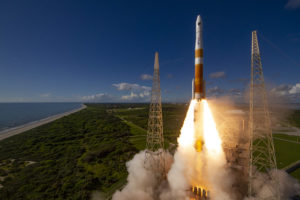
The long-awaited markup of the Senate Appropriations Defense Subcommittee’s fiscal year 2020 defense spending bill fully funds or provides more money for space-related efforts, countering cuts made in the House-passed version and setting up areas of contention before a conference bill is agreed upon. SAC-D leadership released a summary of its FY ’20 markup Sept. 10 upon the bill’s approval by the subcommittee Tuesday morning. The bill provides $622.5 billion in base Department of Defense funding, along with over $70…

 By
By 











